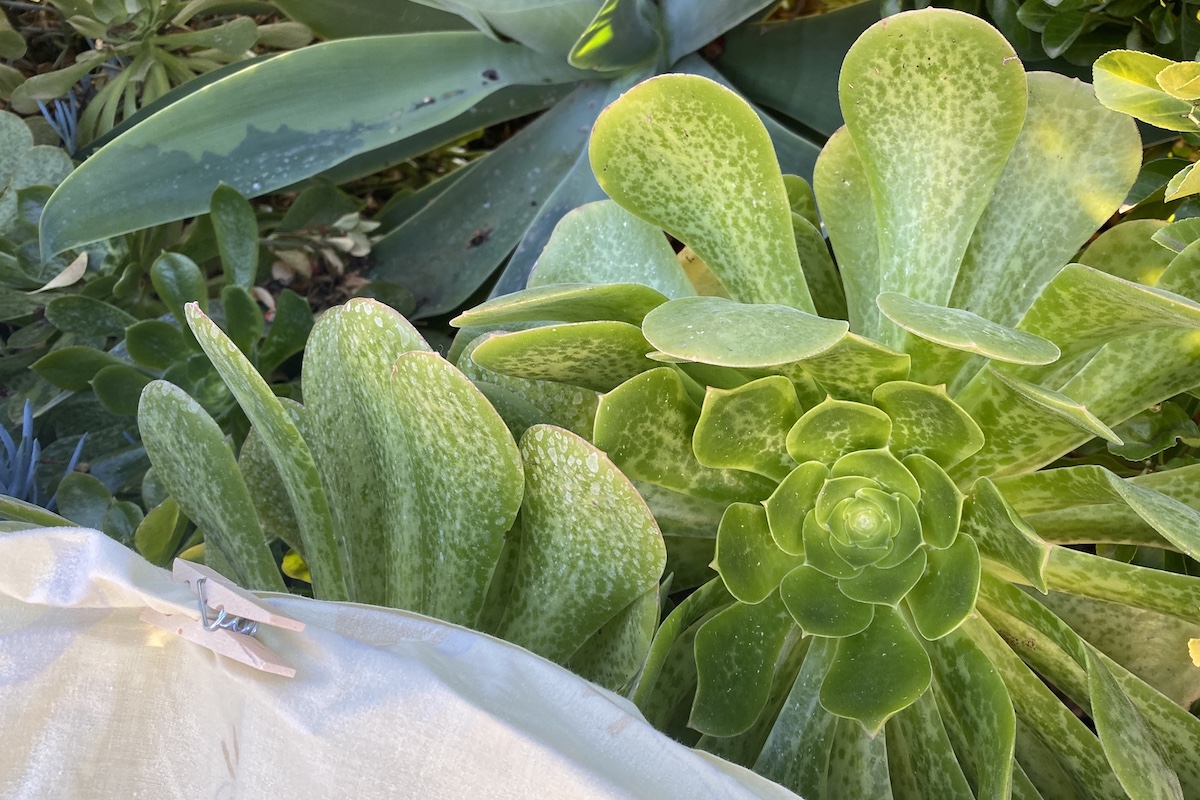
Oh, No, My Succulents Froze!
Update (several days later)

Same aeoniiums, several days afterwards
To my astonishment (and relief) exposed aeoniums came through the frost just fine. Those dark areas that looked for all the world to be damaged tissue? They simply went away. Same with my Agave americana 'Mediopicta Alba'. If you can shed light on why, do leave a comment below. Thanks!
Original post (morning after the frost):
Not good. This morning the birdbath was solid ice and lemons had frozen on the tree. Even those succulents I'd covered have patchy areas indicating damaged tissue. Those not covered (above) look worse.
Last night's forecast was 30 degrees, but parts of my garden likely went lower as cold air flowed and settled. Frost cloth and bedsheets added a few degrees, but it was the duration of the cold that made the difference.
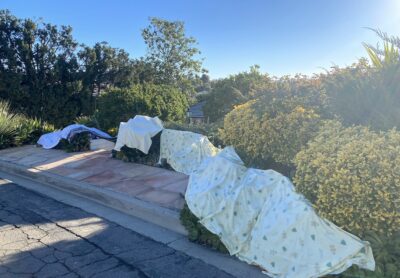
If wind might blow covers off, secure them with clothespins.
Not all of this region---inland Southern CA---gets frost. Avocado and citrus orchards sit atop slopes so frost drains away. Hilltops often are well above 32F while valleys drop below.
Winter had been mild up to now. I was optimistic; I didn't think a late frost would be bad. Hopefully you saw frost advisories on the news or succulent designer Laura Eubanks' social media post showing she'd covered her own garden.
So...how are your succulents?
If you didn't cover them, is it too late? If there's damage, what's to be done?
You won't be able to tell the extent of the damage for a few days. That's time to rethink what-goes-where, while also keeping summer concerns in mind.
It comes down to microclimates
Case in point: After getting tired of covering them in winter, I now grow crassulas only along my home's east-facing wall, beneath eaves. There they get morning sun, are protected from cold, heat, harsh sun and hail, and benefit from the wall's radiant warmth.
Dead and damaged plants
If jades, kalanchoes and others turn brown and collapse, should you remove them?
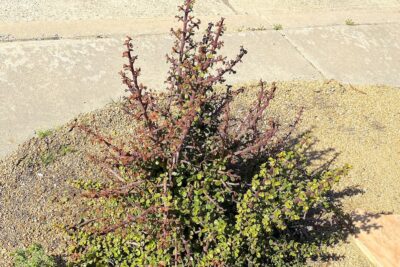
This Portulacaria afra will look good again, once frost-burned branches are cut off.
Wait until the weather warms---late March---then prune damaged plants back to healthy tissue. (Leave dead top growth for now; it helps insulate.) Spring works wonders, and plants grow fast after late-winter rains.
Pruning is fine for shrub succulents but not most rosette succulents. Once aeoniums, aloes and agaves freeze, leaves fall off or die along tips and edges. The good news is succulent roots are shallow, and removal is quick: Yank-and-toss.
When trees are important
Along the coast, where temps range from the low 40s to the high 80s, most succulents are fine out in the open. Inland, trees and eaves offer important protection for tender succulents---something to consider at planting time.

The top of this jade is toast, but the plant's OK. Notice green, healthy growth at its base.
Here, in the foothills NE of San Diego, I have few deciduous trees because I want year-round canopies that moderate excessive sun, heat and cold.
I've noticed that after succulents mature and fill in, leaves filter down through them and disappear. In fact, hardscape under my oaks invariably looks messier than adjacent planted areas. During hot weather, I blast with a hose those succulents with dry leaves and acorns in their crowns. Year-round, I sweep (or blow) debris from steps, patios and walkways.
I'll keep my plants covered for a couple more nights, until lows safely rise above the mid-30s. If you haven't covered your succulents, well, the worst is over, and (sad to say) once the damage is done, there's probably no point in doing so.
So, how did your garden fare during the frost?
Comments, questions, tips, and suggestions are welcome! Kindly include your city or region. As you can tell from above, It matters!
Related Info on this site
Cold Hardy Succulents: Details, Photos and Varieties
Cold-Hardy Succulents: Details, Photos & Varieties Looking for succulents that go below freezing? You’re in the right place! About cold-hardy succulents The common cold-hardy succulents shown here can handle northern winters, snow, rainstorms (if given excellent drainage) and summer dry spells. Sedum (stonecrop) Trailing varieties are lovely as ground covers and in rock gardens, terraces and hanging…
Frost and Succulents: What You Need to Know
Depending on how long temps stay below freezing (32 degrees F), “frost tender” succulents may show varying degrees of damage. When moisture in the cells of a vulnerable plant freezes, it expands, bursts cell walls, and turns leaves to mush. In a “light frost,” leaf tips alone may show damage (“frost burn”). In a “hard frost,” temps stay…

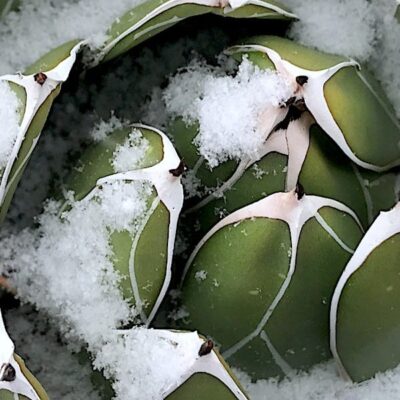
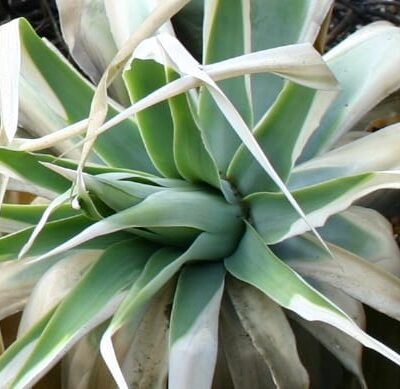
Thanks for the shout out, Debra!
Hope your garden didn’t suffer too many casualties!
Thanks, Laura. I was surprised that the frost was so widespread. I didn’t think it would be a concern in your area. Thanks for the reminder!
My recommendation is to keep them moist until warmer weather arrives. the more you fuss over them, the wors the damage
Good to know, Bob, and you would indeed know, being one of Northern CA’s top horticulturists!
Misting the frozen leaves early in the morning – preferably before the sun hits the leaves – will melt the ice and suck the ice out of the leaves. Works for many plants.
Hm. Might be worth a try. Thanks, Nancy!
I have quite a few potted succulents along with other sensitive plants like pelargoniums, geraniums, basic begonias, tradescantia etc. that suffered varying degrees of frost damage, however; my burro tail that had two nice leads on it looks like it’s toast and I am so sad. My deck is higher than the south facing succulents in my yard that did fine. The deck faces Southwest it’s usually pretty damage free during frosts but not a hard frost. 2,240’ elevation, Placerville area. .
Oh, that is sad. They’re so slow-growing. Are you sure you can’t take cuttings from a part of it that’s still healthy? New roots will grow where leaves are attached to the stem.
I’m hoping that I can take a cutting -that it’s not all going to be mush in a week.
I’ve managed to salvage plants that looked like putty, from a single cutting. Look below the damaged leaves. Also, if roots are intact, a succulent may regrow…although I’ve only see this happen with Kalanchoe luciae (paddle plant).
My succulents were covered in ice for about 18 hours up here in Sonoma and I am fearing much damage. But regarding your comment “The good news is succulent roots are shallow, and removal is quick: Yank-and-toss” do you mean if there is damage (I’m thinking about my huge Agave ‘Blue Glow” plants) are you saying to yank and toss the whole plant or just the affected leaves? YIkes. Thanks!
Ha, I was thinking of smaller succulents like aeoniums. But even agaves are shallow-rooted compared to similarly-sized shrubs. “Covered in ice” means they weren’t exposed to temps below 32 degrees, so hopefully ice will have the same insulating effect as snow. LMK, I’m curious. If leaves are damaged but the agave is fine, snip each with sharp scissors to a point, so they’re the same dagger-like shape (not straight across or only one snip). They usually look much better immediately.
Very timely comments, Debra. Hope your garden recovers (of course it will, eventually!) and that you continue to look for succulents that might be a bit more frost-tolerant.
Thanks, Susi! It’s an ongoing quest to find what is bullet-proof yet still beautiful and interesting.
As always, great, useful information amusingly presented! THANKS!
Aw thanks, dear Matt. I’m flattered you get my newsletter considering you’re on a horse ranch in New Mexico! (Love your blog too.)
I thought about you and your garden when I saw the temps. I hope your garden didn’t suffer too much damage.
Thanks for the info and tips!
Hi Pat — You’re welcome! I’m cautiously optimistic. I may have overreacted. I wouldn’t care so much if frost weren’t so brutal. You should have seen the birds chipping at the ice to get a drink.
I lost one succulent due to frost, I was lucky. I did cover my citrus trees with burlap but next year I will use a new material to cover my frost sensitive plants that I found at Costco. I currently live in the Senora Desert where the weather is brutal and not for the faint of heart. My bird bath was frozen as was the center layers of greenhouse plastic that I originally used to re winter my pepper plants. I subsequently brought them inside and they are now under a grow light for another few weeks until night temperatures average 50 degrees. I just love your gardens, they are quite lovely! Have many of your books, but now that I have retired, many succulents do not do well out here in the sun. Yes it is intense, but I also think its the elevation. I do have good luck with Portulacaria afra in the sun thou, to my surprise! Good Luck with the spring gardening!
Hi Lisa — The Sonoran Desert is gorgeous! Do let me know how you like the material from Costco. Isn’t it amazing how well Portulacaria afra does in the desert? It’s about as resilient as a succulent can get. I’ve seen it lush and happy in Honolulu, too. Thanks for the lovely compliments!
Some years ago, we had a similar frost in Sacramento. I had a good sized orange tree with a fair amount of oranges still on the tree. Rather than pick them, I came up with the idea of covering each orange with one of my husband’s sport socks. It worked like a charm and we didn’t lose any of them! I heard my neighbor saying to himself “man, its cold enough to knock my socks off!” Thats what gave me the idea!
Oh that’s so funny…but clever too. I’ve seen little Santa hats on columnar cacti and euphorbias in desert communities. People set styrofoam cups on aloe blooms, too. I wonder if my husband would notice his socks are missing…!
Well, folks are always surprised when I talk about frost damage to my succulent plants. I live 2 blocks from the water on the central coast.The bay is a north facing one and my garden is on a north facing downward slope.So, the garden gets frost damage every year. I was surprised, though, that this cold came so late in our winter season. Aeoniums, pseudotabulaformiums in particular, seem to suffer the most damage.The plants and I soldier on always because where there is a garden, there is hope.Love your posts, Deborah.
Hi Susie — Such a good point, that a northern slope is a microclimate that’s colder in winter…and probably cooler in summer. Cold air, being heavier than warm, flows downward and settles in low-lying areas. I’ve dealt with this for 30 years, sometimes even seeing the progression of the frost after the fact (it leaves a trail through vulnerable plants). I’m so over covering plants, yet I’m invariably sorry if I don’t. Fortunately I’ve trained my husband in the fine art of helping me. Thank you for your kind words. And hey, I’m jealous! Aeonium pseudotabulaeforme! It does prefer steep terrain. Clings to it like a starfish. Clever girl.
Luckily many of my succulents are under a key lime and a Texas olive tree. They did not freeze even though it went below 32º in Phoenix too. The plants in the open I covered with frost cloth for a couple of days and they were fine. In 2017 we had a bad frost down to 17º for several hours. That froze a lot of plants!
Hi Nancy — I’ll never forget the Frost of 2007 during which temps got down to 17F here for three nights in a row. I lost lots of plants, but that’s nothing compared to small, independent nursery owners who lost their inventories. Even covering the plants didn’t help. It’s amazing what a toll ten degrees can take. Thanks for sharing your experience!